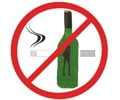Market segmentation , has come handy to find out high risk groups susceptible to alochol drinking. "Cyber Millenials" – tech-savvy singles and couples living in fashionable neighborhoods on the urban fringe – are most likely to engage in high-risk drinking.
"Audience segmentation" refers to categorizing people by their behaviors, attitudes, opinions, or lifestyles. It is widely used in social-marketing efforts. A new study uses this method to find high-risk drinkers in the US, leading researchers to a group dubbed the Cyber Millenials: "the nation's tech-savvy singles and couples living in fashionable neighborhoods on the urban fringe."Results will be published in the August issue of Alcoholism: Clinical & Experimental Research and are currently available at Early View.
"Marketing research provides a unique window on individuals as consumers that has rarely been used in alcohol-prevention efforts," explained Howard B. Moss, associate director for Clinical and Translational Research at the National Institute on Alcohol Abuse and Alcoholism (NIAAA) and corresponding author for the study.
"We already know that a substantial proportion of the morbidity and mortality associated with alcohol use is due to heedless high-risk drinking," said Moss. "In this study, we utilized an established and widely used marketing research database and merged it with data from the Centers for Disease Control and Prevention (CDC) in order to identify high-risk drinkers, their demographics, and consumer behaviors and media habits."
"This is a new approach, which is exactly why this paper is so interesting," added Vivian B. Faden, acting director of the Office of Science Policy and Communications at NIAAA. "Analyses such as this one may provide an important additional way to identify high-risk drinkers by understanding the 'social' groups in which they are most likely to be found. Understanding these groups better and more broadly in terms of their habits, likes and dislikes, and shopping, entertainment and other preferences can help inform prevention efforts."
Moss and his colleagues used multiple marketing-research data sources merged with the CDC's Behavioral Risk Factor Surveillance System database. They performed a segmentation analysis of those individuals who self-reported consuming five or more drinks per drinking episode at least twice in the preceding 30 days.
Advertisement
One of the surprising things about this group, added Moss, was that it is one of the most health-conscious segments of American society. "They have a lower-than-average smoking rate, they go to the gym, they consume organic produce, yet they binge drink at a level that is clearly detrimental to their well-being."
Advertisement
"Clinicians tend to be more blasé with younger, healthier patients, and might not even ask them about their level of alcohol consumption or screen them for alcohol problems," said Moss. Since half of our top 10 high-risk drinking segments are young adults, clinicians might want to 'ratchet up' their index of suspicion when these individuals present clinically. Asking about drinking behavior, giving advice, or conducting a formal brief intervention might save lives in the short-term, and reduce the risk of later development of alcohol-related organ damage or alcohol dependence."
"The average reader may be interested in figuring out which group they belong to," said Faden. "Knowing what the drinking habits of that group are may encourage them to reflect on their own drinking practices and recognize that they may be engaging in high-risk drinking." These findings could also be very useful in designing health campaigns for different audiences, she said.
"Readers need to recognize that a healthy lifestyle should include moderation in the consumption of alcoholic beverages," said Moss. "Being young, sophisticated, smart, successful, affluent and physically active does not protect against the adverse effects of heedless and excessive alcohol consumption."
Source-Eurekalert
SAV













